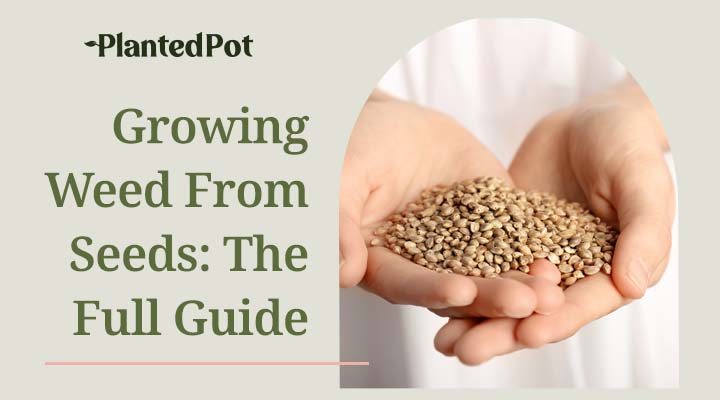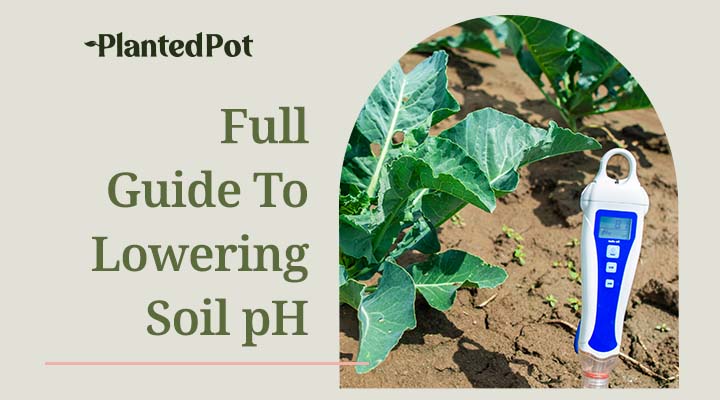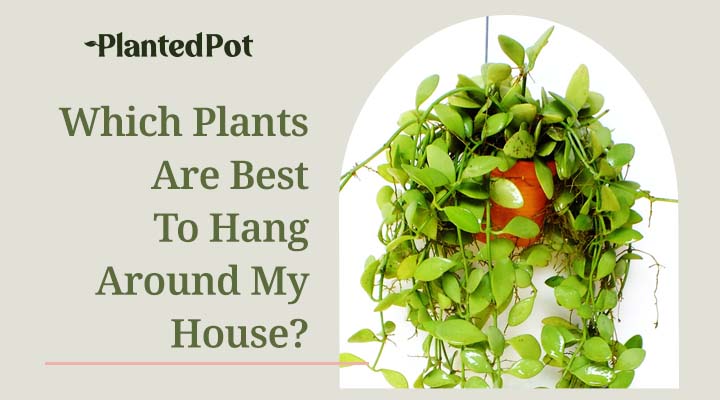
Overwatering Plants: How to Avoid Giving Your Plants Too Much Water
Home / Overwatering Plants: How to Avoid Giving Your Plants Too Much Water
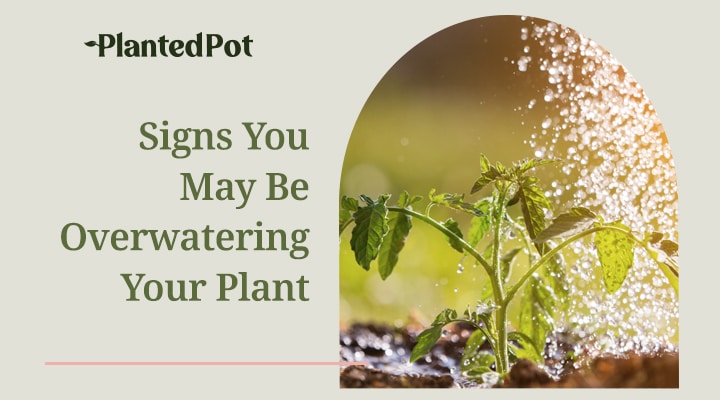
Overwatering Plants: How to Avoid Giving Your Plants Too Much Water
- Rogelio Alvarez
- May 19, 2021
- 8:58 pm
- No Comments
Plants provide us with beautiful splashes of color for our homes. The better we take care of them, the more vibrant our rooms will be. Water is a key element of life for plants, but did you know that overwatering plants can harm them?
We are sometimes too guilty of being overprotective of the things we love. One of the most common issues people run into in plant care is overwatering their plants, thinking it helps growth. Do not panic because we’re here to help guide you! You’ll learn how to identify if your plants are overwatered, ways to avoid overwatering, and even how to help our plants recover. It’s time to put on your gardening gloves and become an expert!
What Happens if You Overwater Plants?
Overwatering disrupts the plant’s feeding process. Roots do not just draw in water; they help the plant absorb nutrients from the soil and breathe. A waterlogged plant will have problems breathing and can not effectively absorb the nutrients.
Plants live off a process called photosynthesis. Photosynthesis is when a plant uses energy from the sunlight to convert carbon dioxide and water into food and convert it into fresh oxygen for us to breathe. This process helps the plant grow, mature, and stay healthy.
Within the root system are tiny little air pockets that allow it to breathe in the soil. Overwatering slowly drowns and suffocates your plant. Your plant needs enough air space to thrive and prosper. A plant with too much water in its soil will begin to attract fungi and other harmful bacteria such as:
- Aphanomyces
- Pythium
- Rhizoctonia
- Phytophthora
In addition to the harmful bacteria that can cause infections, overwatering a plant can lead to root rot. A plant with root rot disease will eventually die if not saved right away.
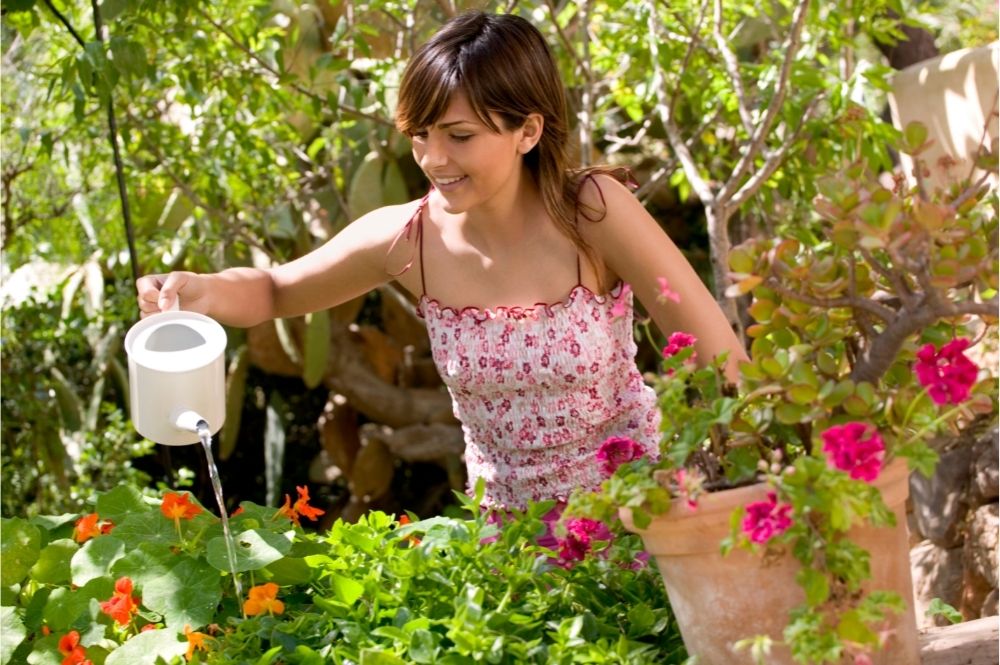
How Do You Know if You’re Overwatering Plants?
If plants could talk, they would be able to tell us when they have had enough water. Unfortunately, they don’t talk, so you will need to pay close attention to the different parts of the plant. Noticeable signs of overwatering can affect the leaves, roots, soil, and stems.
Brown or Yellow Leaves
The discoloration of the leaves is one of the most identifiable signs of an overwatered plant. Most plant leaves display vibrant hues of dark to lime green. Though some leaves can have hints of pink or purple, any time you see any brown or yellow is a sign the plant is dying or overwatered.
Browning or yellowing leaves can also indicate other issues like too much light exposure or an early sign of root rot. You’ll also want to check if the soil is dry when you notice discoloration to determine the source of the problem.
Many people make the mistake of watering their plants more when they see brown or yellow leaves instead of checking the soil or light source. Depending on the type of plant, you should usually allow the top few inches of soil to dry out before watering again.
Wilted Foliage
When an overwatered plant turns brown or yellow, the leaves also become droopy and wilted. Sometimes, a plant can still be green, but limp leaves are another sign of too much water. Wilted leaves also could indicate root rot. Your plant should look lively and stand upright, and overwatering can cause a floppy-looking appearance.
If overwatering isn’t corrected soon enough, the leaves will begin to die. When a plant becomes stressed from overwatering, you’ll begin to notice dead leaves falling off the plant. In some cases, you’ll need to trim and prune the dead leaves to save the plant.
Infected Roots
How can you tell the roots are infected and beginning to rot? You will need to safely remove the plant from the pot and observe the root ball. You might have to gently remove some of the surrounding soil using a trowel to get a better look.
Upon closer inspection of the root zone, look for any discoloration. Roots with a fungal disease will turn a mossy green, slimy yellow, or even gray color. These are clear indicators that you have overwatered your plant.
Edema
While admiring your plants, you start to notice little black or brownish-yellow spots on the leaves. These spots are not beauty marks — these are actually blisters caused by high moisture content in the soil, a common sign of too much water. The leaves can also develop little white spots on the leaves. Too much water stresses the cells of a plant and causes these little spots to form and burst.
You can potentially kill your plant if you are not aware of these signs and neglect to do anything about them. Do not let your plants suffer in silence, and learn these signs of overwatering!
Steps to Avoid Overwatering Plants
It is always better to underwater than overwater your plant. Sometimes root rot or infections can be irreversible. Too much standing water and your plant can die; too little water and your plant can die too. Ideally, you find out the right amount of water that is just right for your plant. So how do you avoid overwatering your plants? The following list may help with that.
- Identify the required care for your specific plant. First-time plant owners often adopt a plant without knowing its watering requirements or basic plant care knowledge.
- Make sure the current pot has drainage holes. A container will proper drainage allows excess water to escape from the pot instead of trapping it. Missing drainage holes? Add pebbles to the bottom container, so water has a way to drain away from the roots and soil.
- Check the soil. If the soil is dry, then water it. Not sure if it is wet or dry? Stick the tip of your finger a few inches in the soil to help you determine if it needs water. The type of plant also determines how dry the soil needs to be before watering.
- Keep a watering schedule record. Having a hard time remembering when you last gave your plant water? Write down how often and how much you water your plant receives by writing it on a calendar or in a notes app on your phone.
Knowing when your plant has had enough water will help it stay healthy and prevent death. These tips should help you maintain great plant health!
How Often Should Plants Be Watered?
Each plant has its own watering demands, and it is important to know how much water your specific plant requires. Houseplants like succulents or various cacti types are great for novice gardeners because they require less water than most other plants. PlantedPot also has extensive plant care guides that will give you a clearer insight into how to water your plant.
For example, plants like Snake Plants or Echeveria succulents are perfect for first-time plant owners! Check out the amazing succulents on our site to help brighten up any room. The growing season typically starts at the beginning of spring and lasts throughout the summer. Less watering is required in the winter and fall since plants are usually dormant during the colder seasons.
In general, most plants are fine with being watered once every week or two. Many houseplants are resilient and can withstand some neglect if you forget. If you are unsure, you can always check the soil. Plants love and need water. After you get into the habit of watering it on a proper schedule, your plant will thank you and thrive!
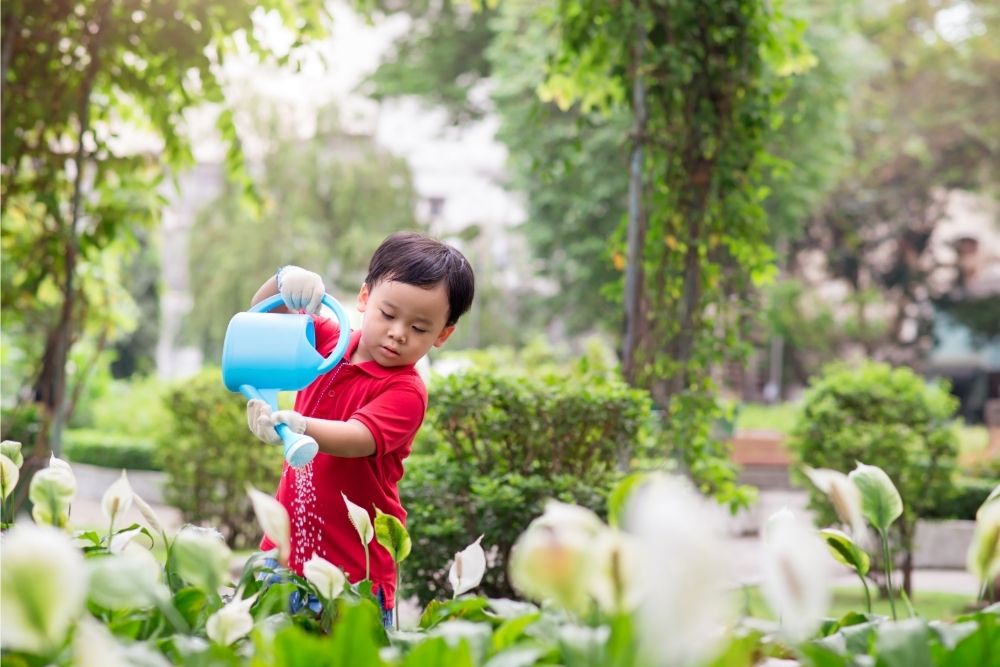
How Long Does it Take for a Plant to Recover from Overwatering?
There is not any exact timetable for a plant recovering from too much water. Mother Nature produces so many plants but does not include instructions for helping a plant recover from too much water. If you want to save your plant, you will need to act quickly.
If you notice the signs that your plant is dying, the first thing you should do is repot your plant. During the repotting process, use scissors to cut away roots affected by fungi or root rot. Make sure to disinfect the scissors with an anti-bacterial sanitizer, so you do not spread fungal disease.
Since the current pot may be contaminated, clean it thoroughly, or purchase a new pot with drainage to prevent too much water build up in the soil. Add fresh soil to it so your plant can benefit from the nutrients while recovering and promoting new growth.
After you finish potting the plant, give it some water on the surface and give it some time for its roots to settle in with the new soil. Plants need time to recover and will not magically recover overnight.
Plant recovery is slow, but after a week or two, your plant might start looking livelier. A sign that your plant is making a successful recovery is if you see new leaves sprout. A previously wilting leaf will start to stand upright and turn green. Patience is essential! So take your time and make sure you do not overwater while your plant is healing.
Final Thoughts
Gardening, whether done outdoors or indoors, is a nice escape from day-to-day stress. Plants help us breathe better and relieve stress. Nurturing a plant can be simple, but overwatering plants is a common mistake among plant lovers of all skill levels.
Don’t worry if you’ve overwatered your plant because you can still rescue it! As long as you are giving your plant a little tender loving care, they should have no problem thriving. Check out our fantastic selection of easy-to-care-for plants on the PlantedPot site!


